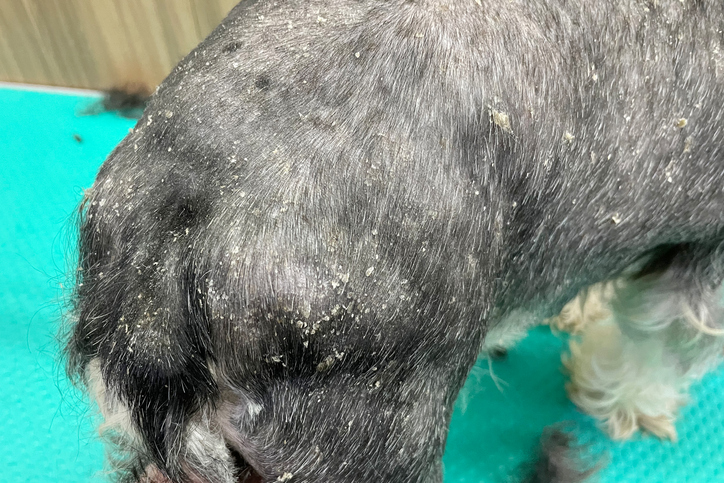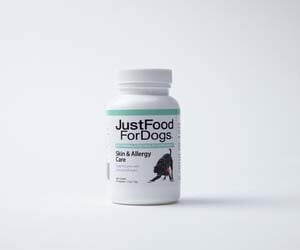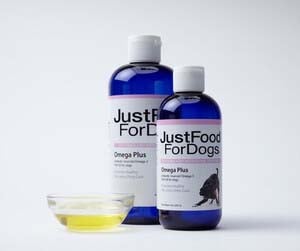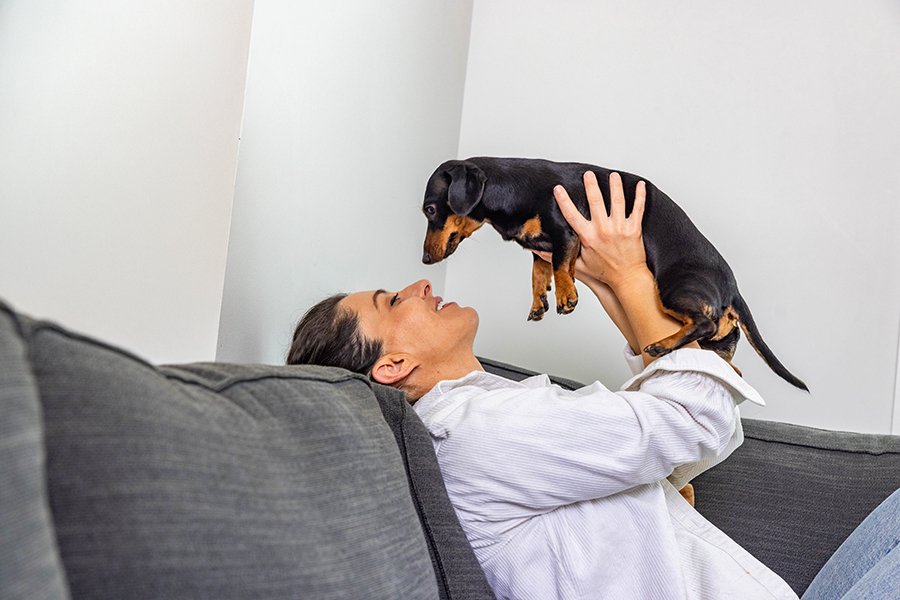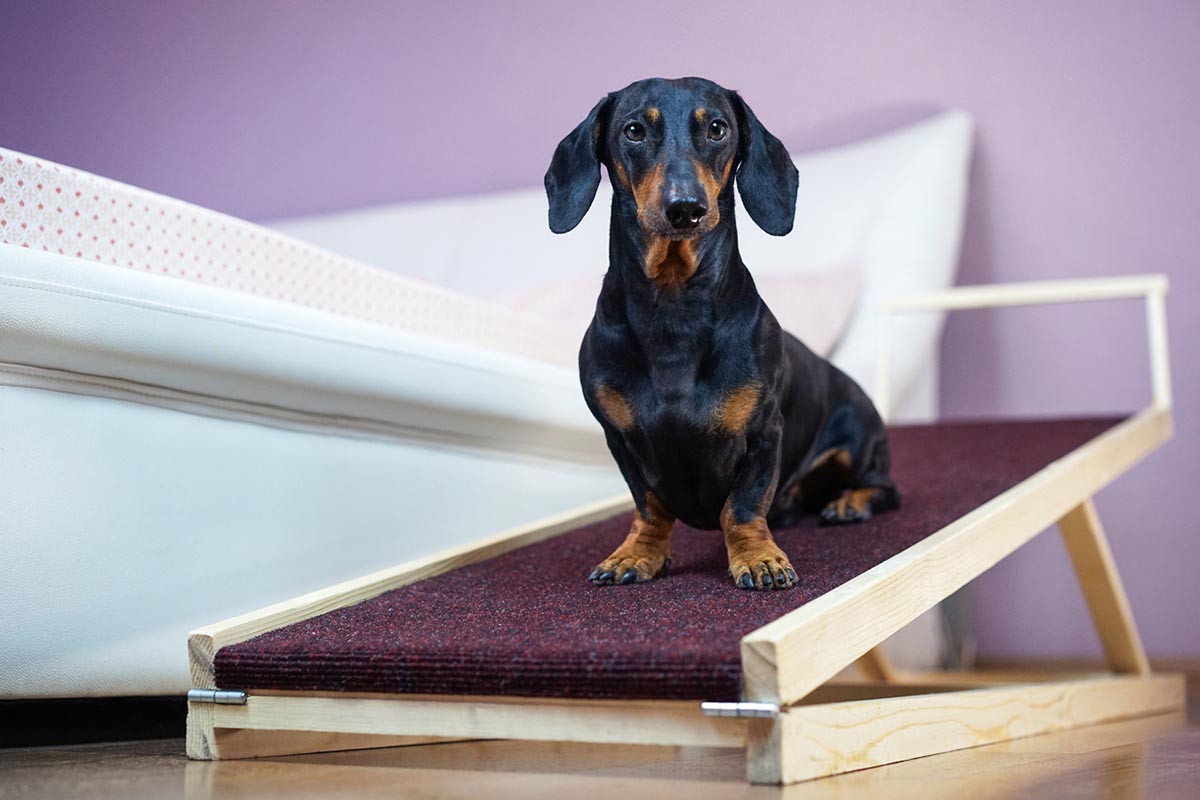Dog Dandruff Treatment, Causes, and Symptoms
There are many reasons a dog might develop this dandruff, from environmental triggers to underlying health issues.
Dogs tend to bring happiness everywhere they go. But sometimes they bring a little something extra that’s not so much fun — a trail of tiny white flakes wherever they go. Yes, we’re talking about dog dandruff.
If your dog produces a mini blizzard every time they scratch or shake, you may find those tiny flakes of dead skin everywhere…on the couch, in their bed, on your dog’s coat. But dog dandruff isn’t just a messy headache for pet parents. Those telltale flakes can also be a warning sign of poor health or nutrition.
Here’s the scoop on doggy dandruff, complete with guidance from Dr. Jessica Wilson, DVM, to help you banish those flakes and ensure your dog’s good health.
Does Your Dog Have Dandruff?
Often, the first sign that your pooch has dandruff is the sudden appearance of dead skin cells on your dog’s fur. But if you’re not seeing flakes, that doesn’t necessarily mean you — or your dog — are in the clear.
On short-haired dogs or dog breeds with darker coats, the flakes are easy to spot. But Dr. Wilson warns that in white or light-colored dogs with longer hair, especially breeds with thick undercoats, you may not see dandruff at all.
In those cases, dandruff may be accumulating, but out of sight. “It might be hard to notice unless you’re brushing through the coat or the dog shakes about and you can see the white flaky stuff flying around,” she says.
Even if you aren’t seeing flakes, keep an eye out for other signs that your dog has dandruff. You may notice excessive scratching (either all over their bodies or in a specific spot). The itchiness could also cause your dog to repeatedly lick an area, causing hair loss.
Tip: To make sure it’s dandruff and not fleas, part the hair to inspect their skin.
In dogs with light-colored hair, you may notice pink, red, or brownish stains on the coat. These are caused by compounds called porphyrins that are naturally secreted in your dog’s tears and saliva (and are also the reason behind canine “tear stains”). While the discoloration itself isn’t a cause for alarm, it could be a sign of increased licking due to dandruff or another skin issue.
What Causes Dandruff in My Dog?
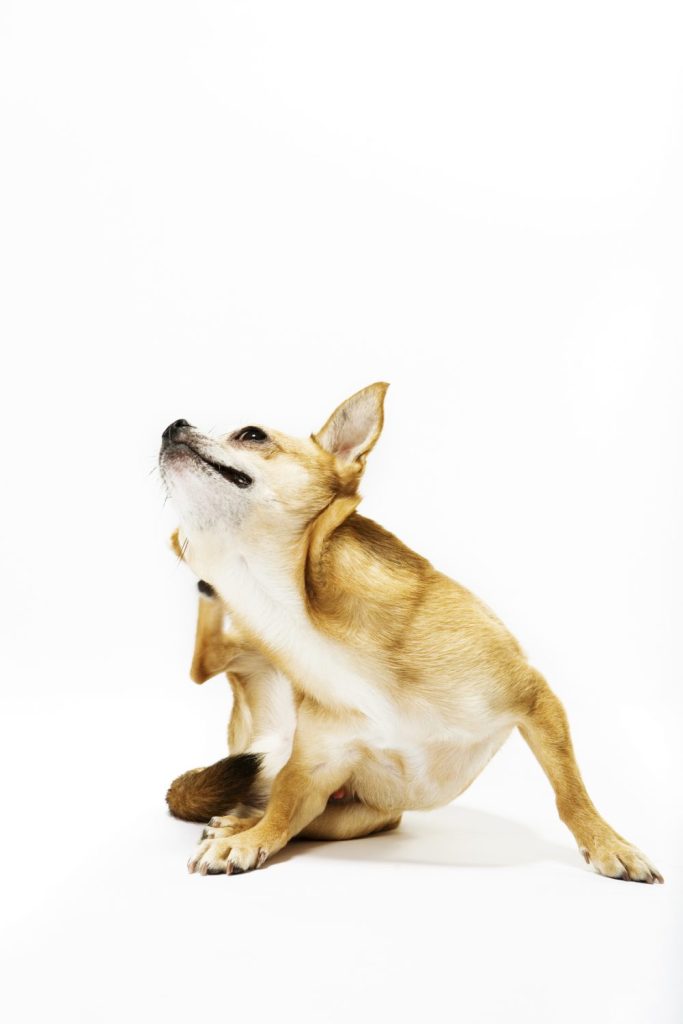
What we call dog dandruff is also known as seborrhea — the excess and disordered shedding of skin cells. There are many reasons a dog might develop this condition, from environmental triggers to underlying health issues. Understanding these causes of dog dandruff is important when it comes to preventing or treating this common skin problem.
Your dog’s skin might become dry and itchy due to environmental conditions. Dogs living in dry climates may be more prone to develop dandruff than dogs living in humid areas, according to Dr. Wilson.
These changes could also happen seasonally. For example, dogs tend to spend more time inside during winter months, where the warm, often dry air of home heating systems can cause dandruff to break out. Investing in a humidifier can help prevent dry winter skin.
“The skin becomes dry, loses moisture, and there’s not enough natural oil to hydrate and moisturize the skin as quickly as the dog needs to keep up with the ambient air,” Dr. Wilson explains. “Some dogs end up with dry, flaky skin.”
And when that dry skin causes dandruff, it’s called seborrhea sicca or dry seborrhea.
Other causes of dandruff
Dry skin is not the only cause of dandruff. Skin that’s too oily can also be the culprit. When a dog’s sebaceous glands — the glands that produce oils to moisturize the skin — are overactive, that can cause the skin to become irritated and flaky, too. This condition is called seborrhea oleosa or oily seborrhea.
Seborrhea can be an inherited skin disorder. Certain breeds are more prone to develop the skin condition. Dog breeds prone to seborhhea include:
- Cocker Spaniels
- English Springer Spaniels
- West Highland Terriers
- Dachshunds
- Basset Hounds
- Golden Retrievers.
Inherited seborrhea is also known as “primary seborrhea” and the cause is often undetermined.
But even breeds at low risk for excessive oil production can develop dandruff from oily skin. In these cases, there is often an underlying condition that sends oil production into overdrive. This is known as “secondary” seborrhea because the dermatitis is secondary to an underlying medical issue.
Secondary Seborrhea
According to Dr. Wilson, there are many causes of secondary seborrhea in dogs. As a result, it can make it a little harder to pinpoint.
Some of the most common causes of secondary seborrhea in dogs are:
- Parasites: Certain parasites, including several different types of mites like cheyletiella mites (aka walking dandruff), can send the sebaceous glands into overdrive as a protective instinct.
- Bacterial or fungal infections: Yeast infections and ringworm are among the skin infections that can trigger excess oil production. This kind of oily seborrhea is a symptom of a larger health issue.
- Hormonal imbalances: Cushing’s disease and hypothyroidism are both associated with an increased risk of dandruff.
- Poor diet: Omega-3 fatty acids are the essential fatty acids required for healthy skin and coat. If your dog isn’t getting enough Omega-3s — either because their dog food isn’t balanced, or it’s not being absorbed properly due to digestive issues — they could end up with dry, flaky skin.
- Allergies: Dandruff may be a sign that your dog suffers from food or environmental allergies that are causing a weakened immune system.
Dog Dandruff Treatment Options
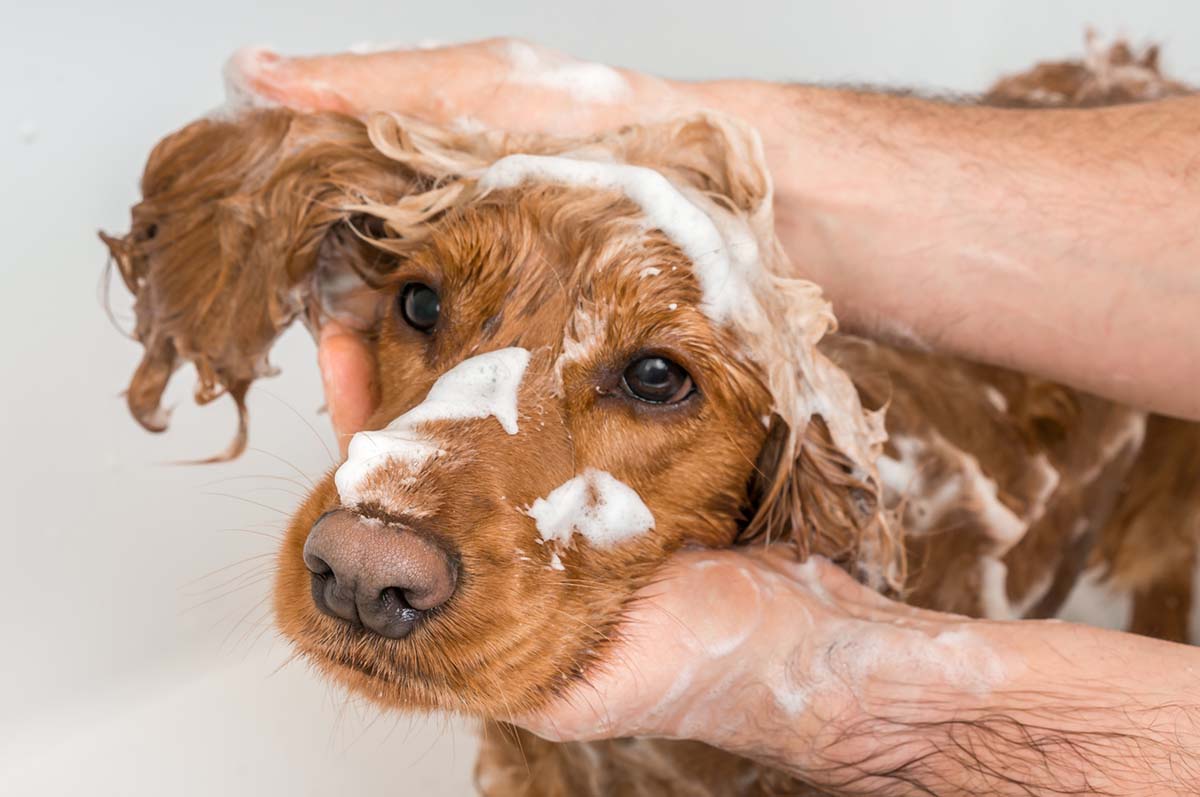
Because there are so many things that can cause dog dandruff, there’s no easy, one-size-fits-all treatment for the condition. So it’s important to work with your veterinarian for an accurate diagnosis before trying home remedies.
“Treating dog dandruff is not a DIY project,” says Wilson. “I would always recommend having an evaluation. First, to figure out what kind of dandruff your dog has and what’s causing it. And second, to get the appropriate treatment and resolution.”
If you suspect your dog is suffering from dandruff, your first call should be to your veterinarian. They may need to do a skin scrape, fungal culture, or bloodwork, in addition to a physical exam, to determine the cause of dandruff and the proper treatment.
While the underlying causes are being treated, there are a few things you can do at home to give your dog some relief.
Shampoos
If weather or indoor heating is causing dry, flaky skin, a bath with soothing shampoo could help moisturize the skin and ease the itch. A bath might not be enough to cure doggie dandruff if there is something other than dry skin causing the issue, but it can provide a measure of relief for itchy, irritated skin.
Dr. Wilson suggests dog shampoos formulated with moisturizing agents like oatmeal. In cases of severe dandruff or compromised skin, your veterinarian may recommend a medicated shampoo with antibacterial agents. Be sure to follow directions for how often to schedule those soothing baths.
“Some dogs need to have a bath as often as every week, but others can go every three to four weeks; it’ll be up to your veterinarian to let you know how often to bathe your dog,” says Dr. Wilson. “You can certainly end up drying out their coats if you’re bathing too often.”
Never use human dandruff shampoo on your pet. Only use shampoos formulated for dogs.
“The shampoos that are designed for humans, are designed specifically to balance out the Ph of our skin. However, those agents can be extra drying for dogs,” Dr. Wilson says. “Human shampoos can have other types of detergents or essential oils that may dry out a dog’s skin or even be potentially toxic to dogs.”
Medications
Dandruff caused by parasites, allergies, or hormonal imbalances will require much more than a soothing bath. Depending on the diagnosis, your veterinarian may prescribe treatments ranging from parasite control or antibiotics to steroid medications or an elimination diet.
“Addressing the underlying cause is often enough to cure the dandruff,” Wilson says. But the results may not be immediate, especially in the case of food allergies, which may require multiple feeding trials.
Diet changes
Dogs with dandruff caused by food allergies aren’t the only ones who can benefit from a change in dog food. Switching to a recipe that’s made with fresh, high-quality ingredients and rich in Omega-3 fatty acids can help nourish skin from the inside out.
“Dogs that are consuming processed foods may have a harder time absorbing all of the nutrients that they need in order to help keep that skin barrier as protected as possible,” Dr. Wilson says. “An approach that may be more beneficial would be a whole food diet, which is more digestible, meaning dogs are able to absorb the nutrients more readily.”
Adding skin-nourishing supplements to your dog’s diet may also help address dandruff woes.
Grooming
Brushing your dog on a regular basis is important for good pet health to help remove dry, flaky skin. It also spreads the natural oils out throughout canine coats to minimize buildup where bacteria can thrive.
Keeping Your Pup Flake-Free
Whether your dog is currently battling dandruff or you are simply eager to prevent future outbreaks, awareness can play a big role in keeping your dog happy, healthy, and flake-free.
Always keep an eye out for those telltale flakes, and be sure to consult your veterinarian at the first sign of itchy skin so you can ensure an accurate diagnosis and treatment. And don’t underestimate the importance of regular grooming and a healthy diet. Taking proper care of your dog, inside and out, isn’t just a good idea, it’s a great investment in your dog’s health and well-being.
This content is for informational use only and does not replace professional nutrition and/or medical advice, diagnosis, or treatment. It is not a substitute for and should not be relied upon for specific nutrition and/or medical recommendations. Please talk with your veterinarian about any questions or concerns.
